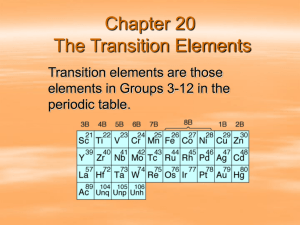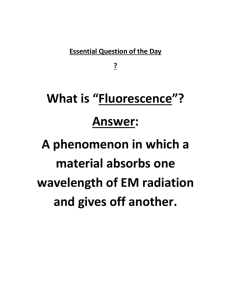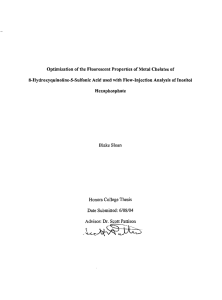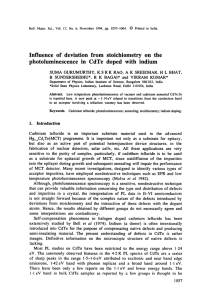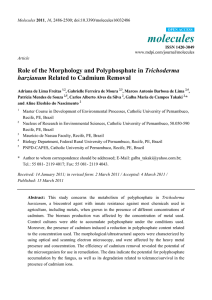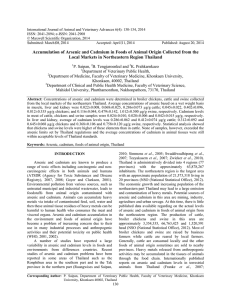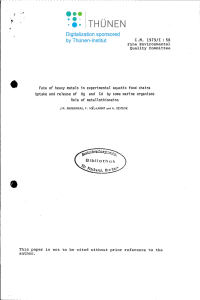CENTENNIAL HONORS COLLEGE Western Illinois University Undergraduate Research Day 2016
advertisement
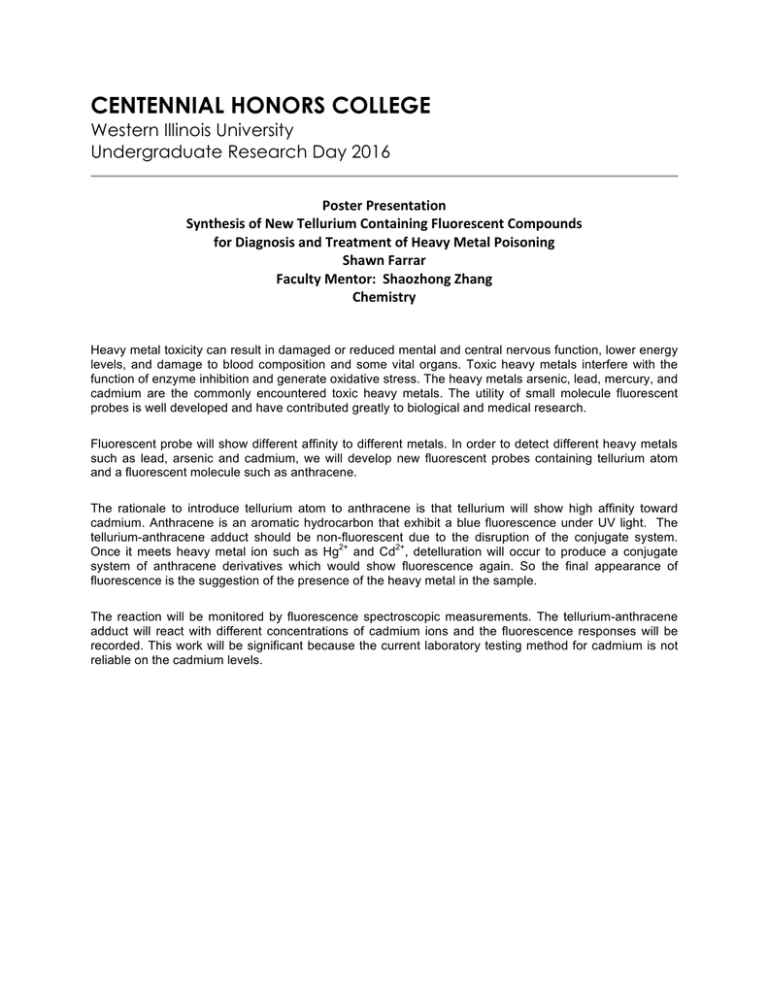
CENTENNIAL HONORS COLLEGE Western Illinois University Undergraduate Research Day 2016 PosterPresentation SynthesisofNewTelluriumContainingFluorescentCompounds forDiagnosisandTreatmentofHeavyMetalPoisoning ShawnFarrar FacultyMentor:ShaozhongZhang Chemistry Heavy metal toxicity can result in damaged or reduced mental and central nervous function, lower energy levels, and damage to blood composition and some vital organs. Toxic heavy metals interfere with the function of enzyme inhibition and generate oxidative stress. The heavy metals arsenic, lead, mercury, and cadmium are the commonly encountered toxic heavy metals. The utility of small molecule fluorescent probes is well developed and have contributed greatly to biological and medical research. Fluorescent probe will show different affinity to different metals. In order to detect different heavy metals such as lead, arsenic and cadmium, we will develop new fluorescent probes containing tellurium atom and a fluorescent molecule such as anthracene. The rationale to introduce tellurium atom to anthracene is that tellurium will show high affinity toward cadmium. Anthracene is an aromatic hydrocarbon that exhibit a blue fluorescence under UV light. The tellurium-anthracene adduct should be non-fluorescent due to the disruption of the conjugate system. 2+ 2+ Once it meets heavy metal ion such as Hg and Cd , detelluration will occur to produce a conjugate system of anthracene derivatives which would show fluorescence again. So the final appearance of fluorescence is the suggestion of the presence of the heavy metal in the sample. The reaction will be monitored by fluorescence spectroscopic measurements. The tellurium-anthracene adduct will react with different concentrations of cadmium ions and the fluorescence responses will be recorded. This work will be significant because the current laboratory testing method for cadmium is not reliable on the cadmium levels.
